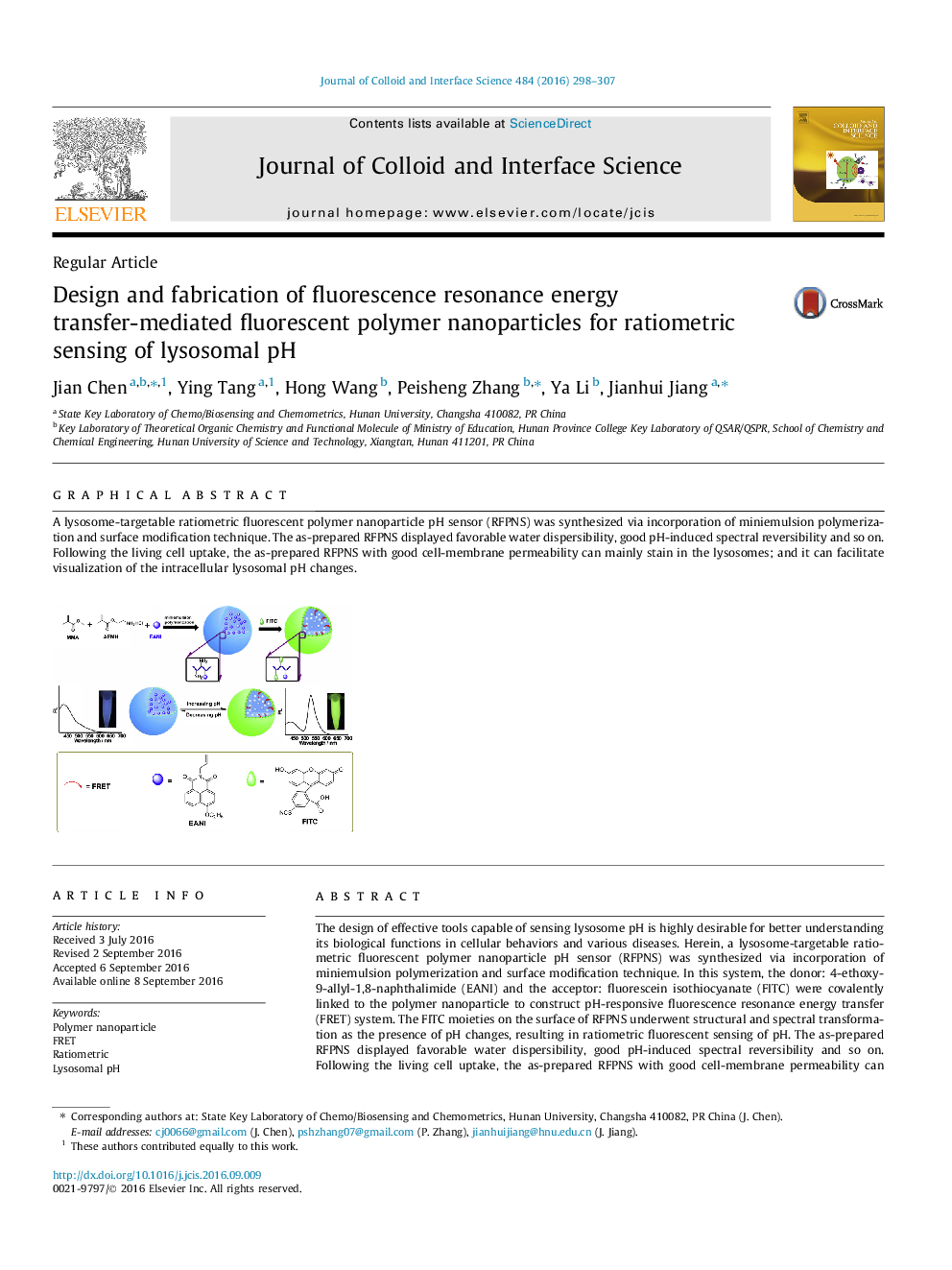| Article ID | Journal | Published Year | Pages | File Type |
|---|---|---|---|---|
| 4985515 | Journal of Colloid and Interface Science | 2016 | 10 Pages |
The design of effective tools capable of sensing lysosome pH is highly desirable for better understanding its biological functions in cellular behaviors and various diseases. Herein, a lysosome-targetable ratiometric fluorescent polymer nanoparticle pH sensor (RFPNS) was synthesized via incorporation of miniemulsion polymerization and surface modification technique. In this system, the donor: 4-ethoxy-9-allyl-1,8-naphthalimide (EANI) and the acceptor: fluorescein isothiocyanate (FITC) were covalently linked to the polymer nanoparticle to construct pH-responsive fluorescence resonance energy transfer (FRET) system. The FITC moieties on the surface of RFPNS underwent structural and spectral transformation as the presence of pH changes, resulting in ratiometric fluorescent sensing of pH. The as-prepared RFPNS displayed favorable water dispersibility, good pH-induced spectral reversibility and so on. Following the living cell uptake, the as-prepared RFPNS with good cell-membrane permeability can mainly stain in the lysosomes; and it can facilitate visualization of the intracellular lysosomal pH changes. This nanosensor platform offers a novel method for future development of ratiometric fluorescent probes for targeting other analytes, like ions, metabolites, and other biomolecules in biosamples.
Graphical abstractA lysosome-targetable ratiometric fluorescent polymer nanoparticle pH sensor (RFPNS) was synthesized via incorporation of miniemulsion polymerization and surface modification technique. The as-prepared RFPNS displayed favorable water dispersibility, good pH-induced spectral reversibility and so on. Following the living cell uptake, the as-prepared RFPNS with good cell-membrane permeability can mainly stain in the lysosomes; and it can facilitate visualization of the intracellular lysosomal pH changes.Download high-res image (118KB)Download full-size image
